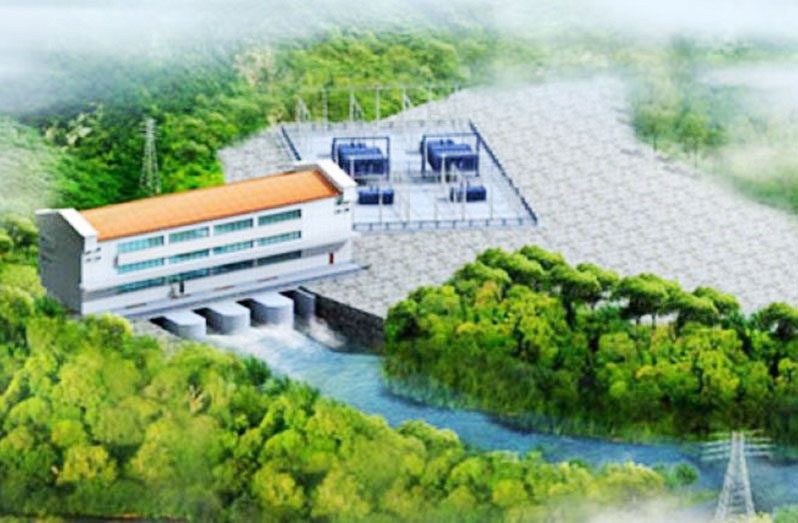OVER the past couple of years, the gap relating to energy coverage between the urban and rural areas of Guyana has notably narrowed, according to the latest Caribbean Quarterly Economic Bulletin prepared by the Inter-American Development Bank (IDB).
The report, which focused on Digital Infrastructure and Development in the Caribbean, indicates that improved access to energy across Guyana has increased to as much as 92 per cent, and although the institution has duly recognised these developments, it went further to point out some areas that require further attention.
One such concern for the IDB is “the widespread use of generators to supplement transmission, and reliance on heavy fuels for power generation represents a significant cost to the economy.”
Fortunately, the IDB’s recommendations fall perfectly in line with plans already instituted by the People’s Progressive Party/Civic (PPP/C) government, more significantly, the intention of the Dr. Irfaan Ali-led administration to implement a comprehensive energy mix, using solar, wind, hydropower and natural gas in order to achieve the ambitious 70 per cent use of renewable energy by 2030.
The cornerstone of this initiative requires the construction and full operation of the Amaila Falls Hydropower (AFHP) Station in Region Eight (Potaro-Siparuni).
China Railway Group Limited has already been greenlighted to undertake the project, based on a Build-Own-Operate-Transfer (BOOT) model. The iconic project is expected to cost just under US$1 billion, and, once operational, will have the capacity to generate 165 megawatts of stable and reliable electricity for 11 solid months of the year, with the 12th month during the dry season being earmarked for scheduled maintenance.
Currently, the Guyana Power and Light Corporation (GPL) sells electricity to the nation at about US$0.33 per kilowatt per hour, and this is expected to be reduced by 25 per cent within the first year of the project; by 50 per cent after five years, and by a further 80 per cent by the end of its 20 years in operation.
As it aims to satisfy the power demands of the entire country by 2026, the government is also looking to establish a second hydropower plant, similar to that which is being constructed at the Amaila Falls.
As outlined in the updated and expanded Low-Carbon Development Strategy (LCDS), the second facility, which is still to be identified, is expected to be built over the next 20 years. The LCDS 2030 has indicated that of the 33 potential sites, many were assessed in the 70s and 80s, when environmental and social standards were lower.
As a result, those assessments have to be updated, in keeping with the environmental and other commitments of today. It is anticipated that once the assessments are finalised, the new site will be identified, at least by 2025.
Once up and running, the second hydropower plant is projected to provide some 370 megawatts of electric capacity by 2035, and a further 150 megawatts of capacity by 2040. The average lifespan of a hydropower system, according to the LCDS, is 100 years. Over this period, replacement of the mechanical and electrical parts would be required, but those account for less than 30 per cent of the initial cost.
In addition to the two giant hydropower plants, the government has already begun efforts to implement three smaller-scale plants: The construction of a 150-kilowatt initiative in Kato; the rehabilitation of the Moco-Moco hydropower site, which would increase capacity by up to 0.7 megawatts; and a new 1.5-megawatt hydropower plant in Kumu.
“The Moco-Moco and Kumu hydropower projects will provide energy to [the] Lethem grid. It is expected that those two projects, in combination with an ongoing solar PV project, will provide the Lethem grid with 100 per cent renewable energy in 2023,” the LCDS 2030 predicts.
To further bridge the energy gap between rural and urban Guyana, the establishment of at least 33 smaller hydropower plants are being considered.
There is also an extended agenda to establish a number of solar farms. As a matter of fact, the PPP/C government has already secured US$75 million in funding to establish solar farms in eight grids, with the intention of producing some 27.8 megawatts-peak (MWp) of solar power to the Demerara-Berbice Interconnected System (DBIS).
The farms are expected to be up and running by 2023, thereby paving the way for solar-generated power to replace 30 per cent of the electricity being supplied to areas along the Essequibo Coast, Linden, Bartica, Lethem, Mabaruma, Mahdia, Leguan and Wakenaam.
Further, as Guyana continues to balance its oil wealth with its global climate change commitments, the government is engaging its partners on the establishment of a US$900 million gas-to-shore project within the Wales Development Zone in Region Three (Essequibo Islands-West Demerara).
This will see natural gases offshore Guyana being transported to an onshore plant, using massive state-of-the-art pipelines; said gases will then be treated and converted to power, and fed to a nearby power plant for consumption by the national grid.
Plans are also afoot to construct additional wind turbines across the country.




.png)









